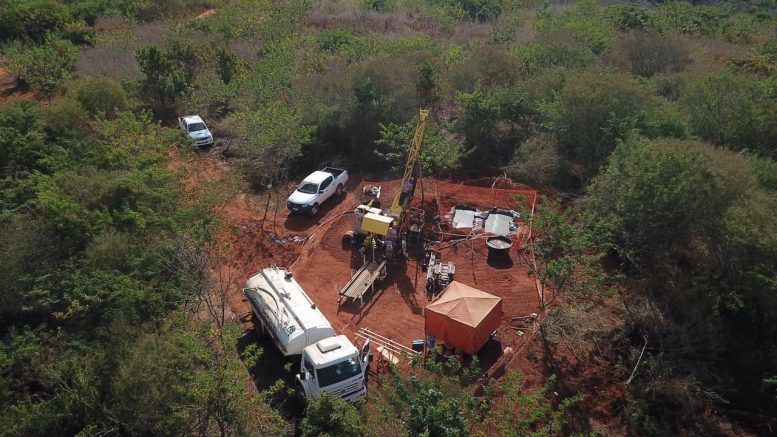A new feasibility study for Lithium Ionic’s (TSXV: LTH; US-OTC: LTHCF) Bandeira project in eastern Brazil outlines an operation with a post-tax net present value (NPV) more than four times higher than its initial capital costs.
Bandeira has an after-tax NPV (at an 8% discount rate) of US$1.3 billion, a post-tax internal rate of return of 40% and initial capex of US$266 million, including a 15% contingency, according to the study released on Wednesday. The after-tax payback period is pegged at 3.4 years.
The underground mine would produce about 17.2 million tonnes of lithium carbonate equivalent (LCE) grading 5.5 lithium oxide (Li2O) over a 14-year life, starting in 2026, at spodumene prices of US$2,277 per tonne. Bandeira is in northeast Minas Gerais state, about 1,000 km north of Rio de Janeiro.
In a research note, Canaccord Genuity analyst Katie Lachapelle wrote that the feasibility study’s demonstration of a low-cost operation posits outcomes that are “far more realistic and conservative” than in the preliminary economic assessment from last year.
‘Trigger for strategic partner’
Noting that the mine life is six years shorter than in the PEA, and capital and operating costs are higher, Lachapelle believes the plan has meaningful upside.
“If Lithium Ionic is to maintain project development timelines, near-term funding will need to be secured,” she said. ” The release of the feasibility study could be a trigger to finalize a strategic partner given increased certainty around key project parameters. This agreement is likely to come with incremental funds to fund construction (potentially in exchange for offtake).”
The study also estimates the project’s life-of-mine (LOM) operating costs at US$444 per tonne of spodumene, and LOM sustaining costs at US$81 million.
“This study marks an important developmental milestone, confirming the strong results from our preliminary economic assessment in late 2023 and solidifying our path to becoming a near-term lithium producer,” Lithium Ionic CEO Blake Hylands said. “While we are very pleased with the results of the study, the company intends to move project engineering forward to the basic engineering phase where a value-add process will take place to further optimize and streamline capital and operating costs.”
Prices still low
The economics of the study stand in contrast to low lithium spodumene spot prices, which have been in a slump since they fell from US$4,525 per tonne last May to US$1,100 last December, according to FastMarkets. They’re currently at US$975 per tonne.
Spodumene prices might make a modest recovery into next year and are forecast to reach about US$1,360 by 2026, before falling to around US$1,090 by 2029, according to the Australian government’s Office of the Chief Economist Resources and Energy Quarterly, published in March.
On Wednesday, Lithium Ionic announced a binding term sheet with London-based private equity firm Appian Capital Advisory to sell a 2.25% gross revenue royalty on Bandeira for US$20 million in cash up front. The company plans to use the proceeds of the royalty to advance development and construction at Bandeira.
The feasibility study comes about seven weeks after the company released an updated resource estimate for Bandeira, which gave the project 23.7 million measured and indicated tonnes grading 1.34% Li2O, for 783,000 tonnes of LCE. Inferred resources come to 18.2 million tonnes at 1.37% Li2O, for 617,000 tonnes of LCE. The updated estimate was based on 50,760 metres of drilling across 233 holes between April 2022 and March 2024.
Bandeira is just northeast of the city of Araçuaí, placing it in a well-connected region for logistics and infrastructure.
The project claims sit across 1.6 sq. km, representing only about 1% of Lithium Ionic’s 141.8-sq.-km land package in the ‘Lithium Valley’, where it also holds its Salinas project, about 120 km north of Bandeira.
Lithium Ionic shares were up 4.5% to 98¢ apiece on Thursday at mid-day, after earlier touching $1.02 each. It has a market capitalization of $129.1 million. Its shares have traded in a 52-week range of 62¢ and $2.74.


Be the first to comment on "Lithium Ionic study gives Bandeira project US$1.3B NPV"